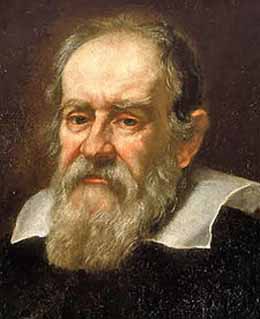Galileo Galilei
Claimed by jlee654
"The Father of Science"
Early Life
Galileo Galilei was born on February 15, 1564 in Pisa,Italy to Vincenzo Galilei and Giulia Ammanati. He was the first-born of six children. The Galilei's were a musical family, as Vincenzo Galilei was a famous lutenist and composer. At age 8, Galileo's family moved to Florence while Galileo stayed behind with a relative. He joined them at age 10 and was sent by his parents to a monastery at Vallombrosa. Galileo enjoyed the monk life, which did not please his father who urged him to become a medical doctor. He was eventually sent back to Pisa to enroll for a medical degree at the University of Pisa. Galileo was not particularly interested in medicine and so he became distracted by mathematics, continuing to study mathematics over his summers and eventually becoming a mathematics professor.
Inventions
Thermoscope
The thermoscope was an early version of a thermometer. The device was a small vase filled with water attached to a thin, vertical pipe with a large, empty glass ball on top. Changes in temperature of the ball would exert positive or negative pressure on the water within the pipe, causing it to rise and fall.
Telescope
Although Galileo did not invent the telescope, he greatly improved it. Initially, telescopes were only capable of up to 3x magnification, but Galileo made them magnify up to 30x.
Pendulum Clock
Upon discovering that the period of oscillation of a pendulum was not affected by amplitude, Galileo replaced the mechanism that previous clocks used with a pendulum to improve their consistency and accuracy.
Hydrostatic Balance
The Hydrostatic Balance was a balance that could determine the specific gravity of an object, typically gemstones. It determined the density of the stones by comparing their weight in water and in air.
Contributions and Discoveries in Physics and Astronomy
Nature of Pendulums
At age 19, Galileo discovered the nature of the pendulum. He timed a swinging lamp by means of his own pulse and found the period of the pendulum to be the same despite changes in amplitude, which he later verified by experiment.
Earth's and Jupiter's Moon(s)
Using his improved telescope, Galileo observed that the moon's surface was not smooth as everyone believed it to be, but had craters and mountains. He also saw that Jupiter had four moons in its orbit, which further enforced his views of heliocentrism.
Connectedness
- How is this topic connected to something that you are interested in?
- How is it connected to your major?
- Is there an interesting industrial application?
History
Put this idea in historical context. Give the reader the Who, What, When, Where, and Why.
See also
Are there related topics or categories in this wiki resource for the curious reader to explore? How does this topic fit into that context?
Further reading
Books, Articles or other print media on this topic
External links
Internet resources on this topic
References
This section contains the the references you used while writing this page
